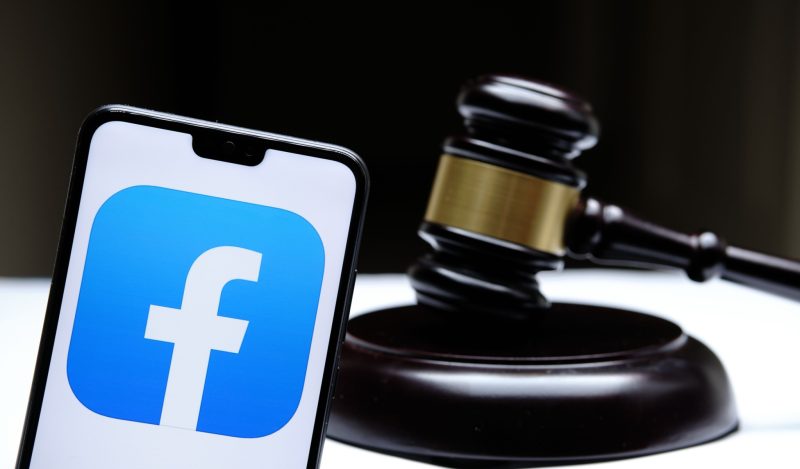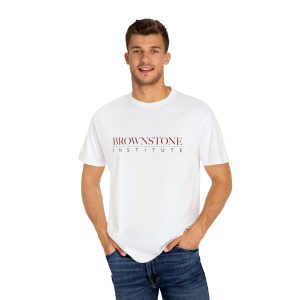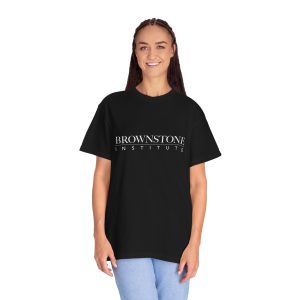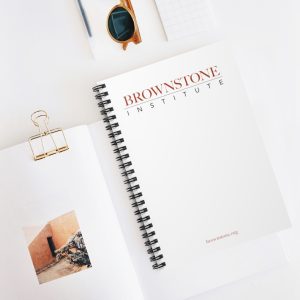The government’s opening argument attempted to characterize their behavior as friendly persuasion toward the social media companies, not overt coercion. Justice Thomas—famous before Covid for not asking questions but now more vocal on the court—opened by asking whether a distinction between government coercion vs. government persuasion was the only way to think about this case?
Were there any First Amendment cases in which state action was implicated without encouragement or coercion, e.g., simply through deep entanglements that may appear on the service to be cooperative? He also asked what the Constitutional basis was for “government speech” was (hint: there is none). The government’s attorney had to admit that the court has not located government speech in any Constitutional provision. The First Amendment is a restraint on the government, not on citizens.
Justice Sotomayor then asked what exactly the injunction does. Specifically, what is the meaning of the criteria established by the Circuit Court that the government violates the Constitution when it uses coercion or “significant encouragement?” The definition of the latter term, used in the Fifth Circuit’s injunction, will no doubt be something the Supreme Court justices will need to wrestle with.
For purposes of an injunction the plaintiffs need to establish several criteria, including our likelihood to prevail on the merits of the argument, the imminent threat of future injury if the court does not intervene, and whether the injunction will likely redress the plaintiff’s injuries. Justice Alito asked about possible future injuries, which could include things like having one’s social media account suspended. Following up on this question of redressability, Justice Gorsuch—who generally does not favor injunctions—asked whether the injunction will “to some extent” remedy the plaintiffs’ injuries. It seems clear that the answer there is yes.
Regarding our standing to bring the case, Alito noted that both of the lower courts found that injuries to my co-plaintiff Jill Hines were directly traceable to government action (she is named specifically in one of their missives), and it only takes one plaintiff with standing to bring the case. Alito pointed out in this regard that the Supreme Court “generally does not reverse findings of fact that have been approved by two lower courts,” both of which found that all seven of the plaintiffs had standing.
By contrast, Justice Kagan seemed very focused on the issue of traceability as it relates to standing: how can we prove that our examples of being censored—which are not disputed—were directly the result of government action rather than decisions by the platforms or their algorithms? Alito later asked whether the traceability/causation burden of proof fell on the plaintiff or the defendant, and Sotomayor mentioned the Clapper case, which used a higher standard for traceability.
There are many problems, however, with the evidential threshold that Kagan and Sotomayor seemed to be embracing: even with extensive discovery—which is hard to get in any event—finding the entire trail from government officials to the takedown of a YouTube video or tweet would be virtually impossible. No such evidential standard would be applied, for example, in a racial discrimination case.
To claim that we lacked standing because we did not have the entire communications thread would open a wide path for government censorship: all the government would need to do is demand censorship of particular ideas or viewpoints or topics without naming names and nobody who was censored would be able to establish standing. I think it’s very unlikely that the court will rule against us on the question of standing.
Justice Alito then got to the substance and merits of the case: “I read the emails between the White House and Facebook [presented in our evidence], which showed constant pestering of Facebook.” He went on to point out, “I cannot imagine federal officials taking this approach to the print media…It’s treating these platforms like subordinates.”
He then asked the government’s attorney, “Would you treat the New York Times or the Wall Street Journal this way? Do you think the print media considers themselves ‘partners’ with government? I can’t imagine the federal government doing that to them.” The government’s attorney admitted, “The anger is unusual”—referring to Rob Flaherty, White House Director of Digital Communications, literally cursing at the company executive and berating him for not taking action quickly enough to comply with White House censorship demands.
Justice Kavanaugh followed up on this, asking the government, “On the anger point, do you think federal government officials regularly call up journalists and berate them?” Kavanaugh also remarked, “On the ‘partners’ point, I do think that is unusual.” Kavanaugh worked as a White House attorney under Bush before he was appointed to the court, as did two other justices for other presidents. No doubt there were many times that they called up a journalist or editor to try and persuade them to change a story, clarify a factual assertion, or even hold or quash the publication of a piece.
Later on, Kavanaugh addressed the government attorney, “Your argument is that coercion does not encompass significant encouragement or entanglement. It’s not unusual for the government to claim national security or wartime necessity to suppress a story.” He then asked about the common interactions between government and social media in this regard.
Kavanaugh seemed to suggest that the anger expressed in government communications with the press was not, in his experience, so unusual. Kagan concurred, saying, “Like Justice Kavanaugh, I have had some experience encouraging the press to suppress its own speech,” whether about a bad editorial or a story full of factual errors. “This happens literally thousands of times a day in the federal government.” With a wink and a nod to the other former White House attorney on the bench, Chief Justice Roberts quipped, “I have no experience censoring anyone,” which generated a rare chuckle from the justices and audience.
The analogy to the print media, however, does not hold in the case of the government’s relationship with social media. There are several crucial differences that profoundly change the power dynamic of those interactions in ways directly relevant to our argument. First, in the case of newspapers the government official is talking directly to the journalist or editor—the person(s) whose speech he is trying to alter or curtail.
The journalist has the freedom to say, “Yes, I see your point about national security, I’ll hold my story for one week to allow the CIA time to get their spies out of Afghanistan.” But they also had the freedom to say, “Thanks for trying, but I’m not persuaded I got the facts wrong on this, so I’m going to run it.” The publisher/speaker here has the power, and there is little the government can do to threaten that power.
But of course, with social media censorship the government was never talking with the person who was censored, but with a third-party operating entirely behind the scenes. As my co-plaintiff Dr. Martin Kulldorff told me on Wednesday, “I would have been happy to get a call from a government official and hear about why I should take down a post or change my scientific views.”
The second key difference is that there is little the government can do to destroy the business model or otherwise cripple the New York Times or other print publications, and the journalists and editors there know this. If the government pushes too hard it will also be front page news the next day: “Government trying to bully us to censor disfavored information” with the lede, “Of course, we told them to take a hike.” But the government does have a sword to hang over the head of noncompliant social media companies if they refuse to censor, including the threat to remove Section 230 liability protections, which Mark Zuckerberg has accurately called an “existential threat” to their business, or threats to break up their monopolies.
When the FBI calls Facebook or Twitter with censorship demands the executives there know that this weaponized agency has the power to launch frivolous but nonetheless onerous investigations at any time. It thus becomes impossible for social media companies to tell the government to take a hike—indeed, they may have a duty to their shareholders not to put the company at such serious risks by resisting government pressure. Again, if the FBI pulled such a stunt with the Washington Post it would be front page news until the government desisted.
Justice Gorsuch then asked whether there can also be coercion from inducement and not just threats? Would changing Section 230 qualify? How about saying to the social media companies, as President Biden did during Covid, “You’re killing people”? The government lawyer here, of course, tried to dance around these concrete examples, which are both there in the evidential record we presented to the court.
Kavanaugh and Kagan, and possibly Roberts, appeared interested in preserving the government’s ability to persuade social media companies while still drawing the line at coercion. I believe an attempt to thread this needle is mistaken (though we have plenty of evidence of coercion if that’s their exclusive standard).
The plain text of the First Amendment does not say the government shall not prevent or forbid free speech; it says the government shall not abridge free speech—i.e., shall not do anything to lesson your ability to speak or diminish the potential reach of that speech. As one of our NCLA lawyers, Mark Chenowith, put it, a sensible and simple injunction would simply state, “Though shall not request that social media companies suppress content.” Period, full stop.
But the justices seem to want to find some other place to draw the line: perhaps it will uphold the Circuit Court’s criteria of “coercion or significant encouragement” (which the Supreme Court has used in prior free speech cases: Bantham uses coercion and Blum uses significant encouragement) with some additional language to define what counts as significant encouragement. Or perhaps they will abandon that language in favor of something stricter. After all, none of the justices who previously worked in the White House want to believe that they may have overstepped by bullying a reporter on the other end of the line too aggressively.
Justice Roberts asked the government, How do you evaluate what counts as coercion, and Roberts points to the Bantam Books case precedent that used a “reasonable person” standard. The government’s attorney responded by pointing out that the companies often said no to the government. I would add that they initially said no, but the typical pattern then involved relentless pressure and badgering from the government until the company finally said yes.
Returning to a theme he had introduced earlier, Thomas asked whether you can censor by agreeing with the platforms: “Let’s work together, we’re on the same team,” and so forth. The government’s counsel responded, “When the government persuades private partners that is not censorship.” But Thomas continued to press the point. What he was hinting at here, I believe, is the legal doctrine of joint participation, which prior cases have established. Even if, on the surface, there appears to be no coercion or pressure, cozy entanglements and enmeshments between public and private actors—even if cooperative—could implicate the private actors as state actors, thereby subject to the Constitution and the First Amendment.
Gorsuch asked another insightful question: is coordination of censorship easier with only a few concentrated social media companies? “We need to account for the possibility that this may make censorship easier.” In other words, the government establishes “relationships” and request portals—as they have done—with the big ones: Meta (Facebook and Instagram), X (formerly Twitter), Google (YouTube), Microsoft (LinkedIn), and one or two others and they have 99.9% of the social media space covered. This could also, by the way, incentivize the government to avoid antitrust efforts even when the companies engage in monopolistic practices against their competition (as when Amazon, Google, and Apple destroyed Parler).
Barrett then asked another keen question regarding the coercion/significant encouragement standard, which suggested to me that she understood the problem of entanglement and joint action. She posed the following hypothetical to the government’s lawyer: could Facebook voluntarily turn over its entire content moderation on a particular topic to the government? The government’s lawyer could only admit that this would constitute joint action.
This was, in my opinion, a very important moment in the hearing, which could have easily been overlooked. It clarified that even the interactions which appear voluntary and cooperative may also be constitutionally problematic. Furthermore, joint action, in which companies are implicated as state actors, could open them up to First Amendment liabilities as well. The companies will want to distance themselves from that risk by resisting the government’s demands more forcibly. An injunction could give them the necessary leverage against the government to do so.
I would add that that Barrett’s hypothetical was not really hypothetical: this is precisely what the social media companies did during Covid, whether under pressure or voluntarily: they handed over Covid censorship entirely to the CDC and the Office of the Surgeon General—entities that were very frequently wrong in their assessments and recommendations where the plaintiffs were right. As my co-plaintiff Jay Bhattacharya continues to point out: the government thus became the biggest spreader of misinformation during Covid.
Republished from the author’s Substack
Join the conversation:


Published under a Creative Commons Attribution 4.0 International License
For reprints, please set the canonical link back to the original Brownstone Institute Article and Author.









